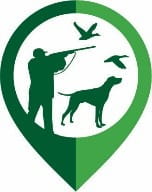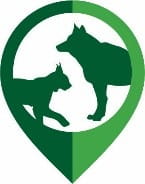The Government of Saskatchewan aims to sustainably manage game species and their habitats including white-tailed deer, mule deer, moose, elk, pronghorn, bison, upland game birds, waterfowl, bear, wolf, cougar and furbearers. To help wildlife managers better understand the many aspects of wildlife populations, such as population size, herd structure, productivity (e.g., young per female), impact of disease, harvest and hunting effort and human-wildlife issues that impact wildlife populations, several survey types are employed.
- Ground-Based Trend Surveys
- Pronghorn Herd Structure Survey
- Spotlight Deer Surveys
- Aerial Population Density Surveys
- Citizen Science Surveys
- Hunter Harvest Survey
- Co-operative Wildlife Management Survey
- Annual Status of Furbearers Survey
This information is used in conjunction with the Game Management Plan, Game Allocation Framework and species-specific management plans to manage wildlife in Saskatchewan.
Ground-Based Trend Surveys
Pronghorn Herd Structure Survey
The pronghorn herd structure survey monitors the changes in pronghorn populations over time. There are 70 routes (80 km each) established across the pronghorn range in Saskatchewan. Ministry staff complete one survey per route annually between July 1 and July 21. The number, age and sex of all pronghorn are observed within 800 metres either side of the road.
Spotlight Deer Surveys
Each October, the Ministry of Environment conducts ground-based spotlight deer surveys on established routes in select wildlife management zones (WMZs) across the province. Observers record the number, age and sex of species that they detect. Routes are approximately 160 km and run through a variety of habitats. Data in each region is considered comparable to other years' data for the same region, thus yielding a population trend for game species of that region.
Aerial Population Density Surveys
The Ministry of Environment conducts aerial surveys to determine species’ density and generate population estimates for select regions across the province. These surveys, typically conducted in winter when snow cover and lack of foliage make observations easier, are designed to estimate age (i.e. adult vs. young) and sex composition of ungulate populations. Population structure is usually presented as adult males or young per adult female.
Citizen Science Surveys
 Hunter Harvest Survey
Hunter Harvest Survey
Hunter harvest surveys are an important component of managing game in Saskatchewan and provide valuable information for quota and season setting for the upcoming year. You will find detailed information about this survey and an annual summary of results.
 Annual Status of Furbearers Survey
Annual Status of Furbearers Survey
The Annual Status of Furbearers Survey asks trappers to assess the abundance of local furbearers. Each species is assigned a number between 0 and 4, with 0 corresponding to never being found in the area, 1 to sometimes being found but not present in the year of interest, 2 to being scarce, 3 to being common and 4 to being abundant. The average of all trappers reporting on the species is summarized in order to determine if the species is abundant (>3.3), common (2.8 – 3.2), fairly common (2.3 – 2.7), uncommon (2.0 – 2.3), scarce (<2.0) or never found (0). Similarly, trappers are asked to identify if the abundance of each species is lower, similar or higher than the previous year. The survey can be accessed through your HAL account and is available to all trappers purchasing a Northern Fur Conservation Area or Southern Fur Conservation Area trapping licence.
